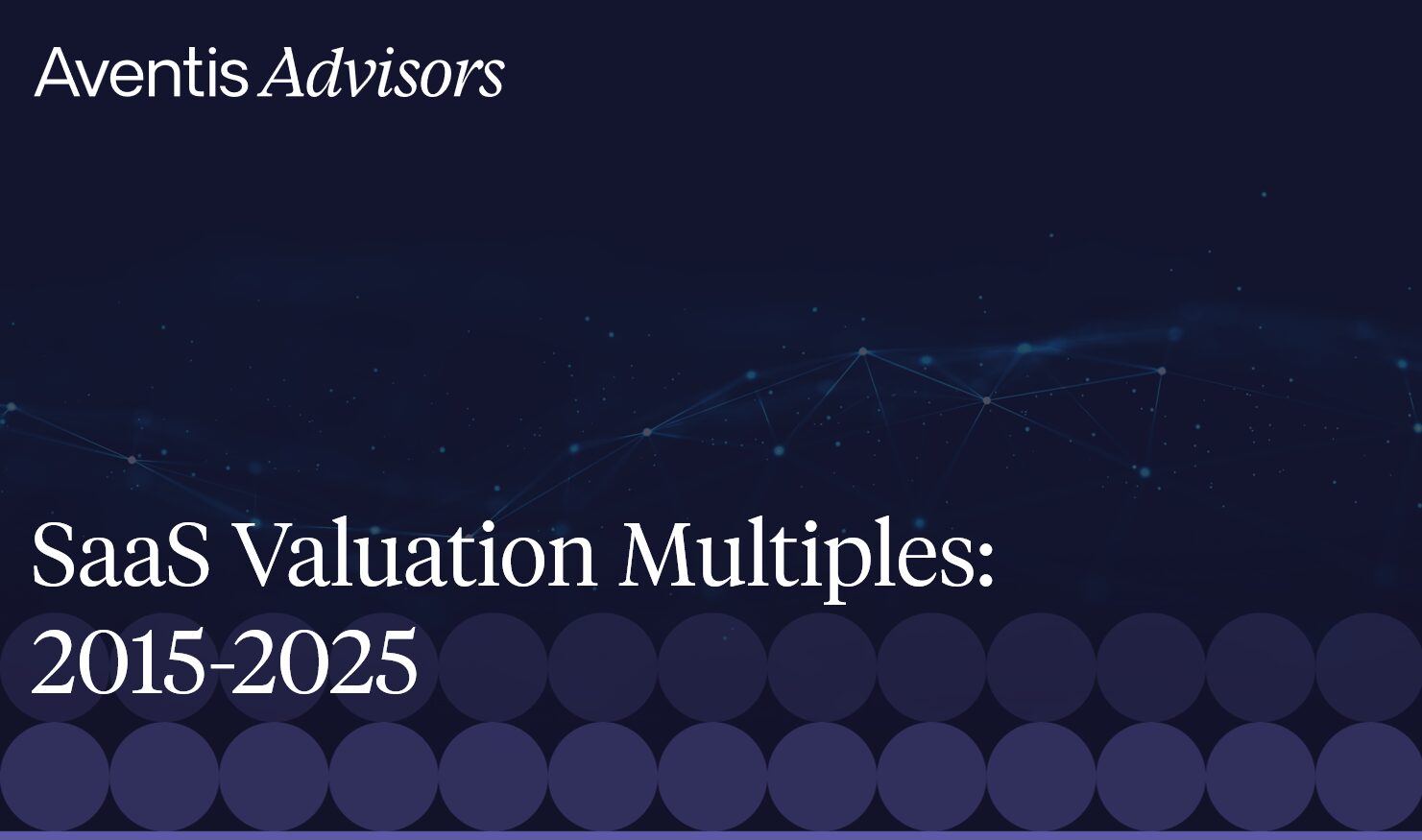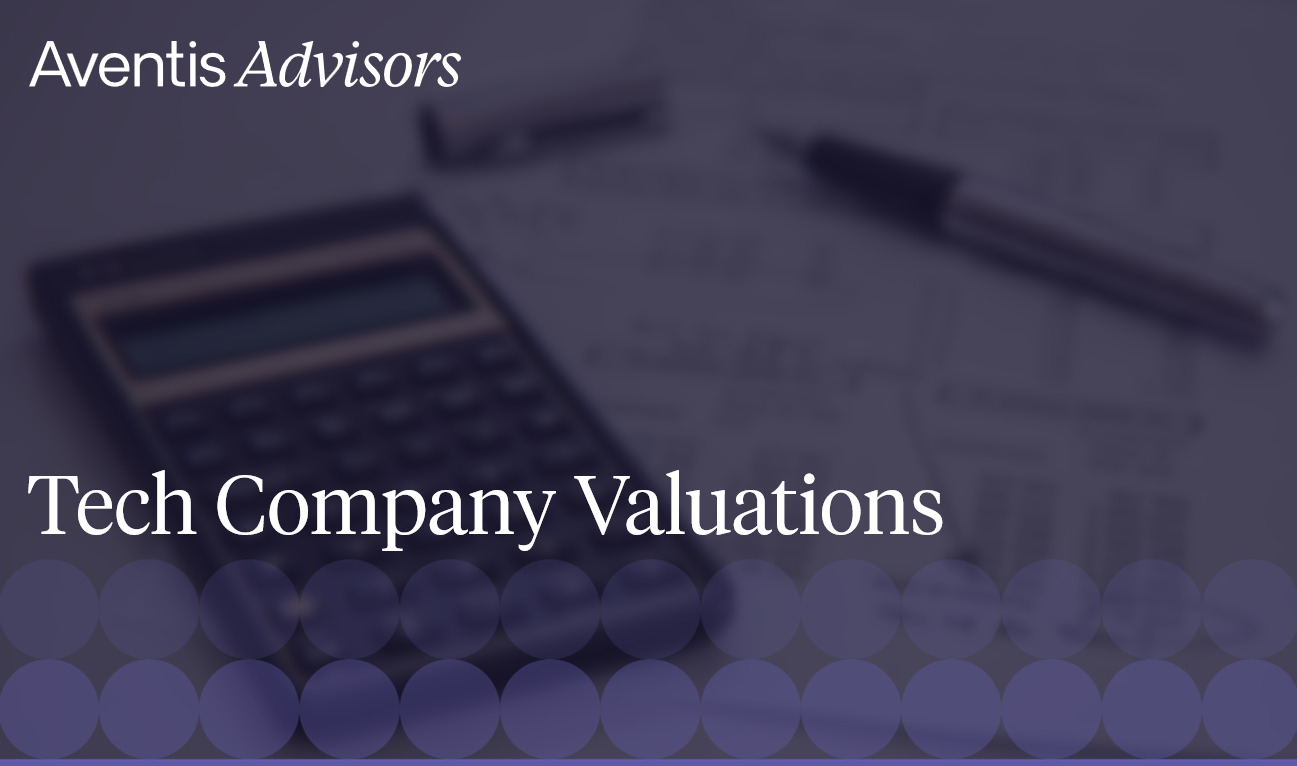In this article, we explore valuation multiples in the software industry on a global basis.
Valuation multiples for publicly traded companies are updated daily, attracting significant media attention and analysis. As a founder, you might ask, “What does this mean for my private software company?” There are two important reasons why monitoring these public price movements is relevant.
- Insight into valuation sentiment: They give an idea of overall valuation sentiment and reflect recent trends, buzzwords, and investor focus (e.g. growth vs profitability)
- Exit timing for founders: Keeping an eye on valuation multiples can help founders time their exits. Valuations for software companies feed through to private markets, though with a slight delay
For most founders and business owners, public software ‘comparables’ are not truly comparable because their company:
- Generates revenue in the millions, as opposed to the $100M+ ARR reported by most listed SaaS companies
- Prioritizes profitability and can’t afford to burn through cash for years to investing in revenue growth
- Is registered outside the US
Due to these disparities, we decided to review hundreds of private deals from 2015 to Q4 2024 to assess and understand the multiples paid in private markets. Our findings include:
- Median valuation: Over the last ten years, the median software company changed hands at 16.4x EBITDA and 3.0x Revenue
- Surge in 2021: Valuations temporarily jumped in 2021 to 6.0x Revenue, but now seem to be returning to the long term mean
- Impact of deal size: The size of a deal played a crucial factor in determining valuation multiples
- Moving from $5-20 million deals to those in the $500M+ basket effectively doubled the multiple
- Influence of US registration: US registration added about 4-5x to EBITDA multiple
Private market software multiples: our methodology
In our report, we examined valuation multiples for software companies based on transactions with disclosed valuations. In a database of 40,100 transactions categorized as ‘application software’, we found 2,074 with disclosed valuation multiples in the database, including EV/Revenue or EV/EBITDA.
It’s important to note that this report shouldn’t be considered a scientific analysis. Valuation multiples are only disclosed for certain transactions. However, we believe our analysis offers valuable insights into valuation trends and the most critical factors affecting software company valuations.
Our review examined how valuation multiples shifted between 2015 and January 2025, including influences by deal size and a company’s country.
Among the various valuation multiples we observed, the two most popular were EV/Revenue and EV/EBITDA. We found 2,074 transactions with disclosed Revenue multiples and 981deals with disclosed EBITDA multiples.
It’s worth noting that our analysis included both on-premise and SaaS companies.

SaaS valuation multiples vs On-Premise software multiples
In recent years, a lot of attention has been directed towards valuation multiples of SaaS companies. In our analysis, we chose not to differentiate between SaaS and on-premise software vendors for two reasons:
- The traditional boundaries between these two software delivery models have become blurred in recent years.
- It’s becoming more difficult to distinguish between SaaS and on-premise software companies as on-premise vendors transition towards more cloud technology and subscription-based models.
While SaaS companies have commanded higher valuation multiples in the past, usually due to their expected growth rates and more predictable revenue streams, this gap has been closing. This is largely due to on-premise vendors shifting to subscription-based models and pivoting to the cloud.
SaaS valuation multiples: 2015-2025
In our practice, we still see SaaS companies receiving higher valuations than their on-premises peers. This is usually due to SaaS companies having less technological debt and better growth prospects.
Average EV/Revenue multiples for software companies
Revenue multiples are common in software company valuation as many of them actively invest in growth while generating little to no profit.
Amongst the 2,074 transactions with available revenue multiples in our analysis, the median EV/Revenue multiple stood at 3.0x. This figure remained relatively stable between 2015 and 2020, increased in early 2021, and has been declining since then. In the H2 2024 the median multiple decreased to 1.5x.
There is a great deal of variability in valuations in this sector. The top 25% of software companies commanded multiples exceeding 6.4x of their revenue, while the bottom 25% were valued at 1.8x of their revenue.
The highly valued software companies typically shared numerous characteristics, including:
- Addressing expansive markets
- Rapid growth with a clear pathway to profitability
- Strong SaaS metrics, such as net revenue retention, churn rates, and lifetime value to customer acquisition cost ratio (LTV/CAC).
It’s important to note that the revenue multiple is usually only a proxy for profitability. In the end, investors are mostly interested in the cash flow a company can generate in the future. This is why the EBITDA multiple is also widely used for software valuation, especially for more mature companies.
Average EV/EBITDA multiples for software companies
The EBITDA multiple is widely used for valuing mature companies with slower growth rates or those specializing in niche markets or geographic-specific products.
In our sample of 981 transactions, we found the median EV/EBITDA multiple to be 16.4x. The top quartile of companies in our sample commanded multiples of over 30.8x, while the bottom saw valuations below 9.7x.
Reasons for undervaluation may have included slower growth, technological debt, and customer concentration.
Changes in valuation multiples between 2015-2024
Private software valuations have been relatively stable in the period between 2015 and 2020. During this time, private SaaS companies changed hands at around 3x Revenue and 14-16x EBITDA.
The 2020-2021 period saw an exception to this, with investors bidding up prices in both public and private software deals, fuelled by the availability of capital and low interest rates. In H2 2021, the median multiple for a private software company grew to 6.0x Revenue and 23.9x EBITDA. It seemed that investors were willing to overpay, after looking at the impressive valuations of public SaaS companies.
Even more impressive was the growth experienced in the top quartile of companies. In the first half of 2022, investors paid for the top 25% companies more than 50 times their annual earnings.
This sentiment started to change in early 2022, when the Fed began raising interest rates. Interest rates play a major role in any valuation, as they’re used to discount future cash flows. Suddenly, unprofitable SaaS companies valued at a high revenue multiple became much less attractive.
By H1 2022, the median EV/Revenue had dropped to 5.1x, moving closer to its historical average of 3x. This decline continued into Q3 2023, with the median transaction multiple declining to 3.2x – well below the long-term average. During this time, public SaaS valuations experienced even larger boom and bust cycles.
In H2 2024, the median EV/EBITDA multiple was 14.8x.
Effect of company size on valuation multiples
The size of a company plays a crucial part in determining its valuation. Larger software companies consistently command higher valuations per dollar of revenue or earnings. In fact, the EBITDA multiple grows by 2-3x every time a company moves one notch up the ladder (see chart).
There are a number of reasons for this trend:
- Investor mandates: Most investors have a defined mandate. For example, financial investors typically target a minimum revenue threshold and investment size. On the other hand, strategic investors look for companies with a big enough size to impact their business operations.
- Broader investor appeal: Larger software companies will naturally attract a wider base of investors. This creates competition amongst investors and often leads to a higher valuation in the sale process.
Reduced risk: Bigger software firms are less risky. They’re usually less dependent on founders, have a solid management team, and established processes in place. As a result, there are fewer things that might go wrong in the business.
Effect of geography on valuation multiples
The geographical location of a software company also plays a part in determining its market value.
US-based software companies, for example, are valued more highly at 4.2x Revenue or 21.8x EBITDA. There can be various reasons for this:
- Market size & scalability: American companies are targeting the largest market in the world and have massive scaling potential.
- Deal size: The higher value of US companies may be attributed to a greater deal size. The median deal size for US transactions is $234M, compared to the overall dataset’s median of $55M.
At the same time, software businesses from non-English speaking countries face their own series of challenges. These companies are often more localized, difficult to internationalize, and have less potential for global scaling. In summary:
- French and German companies: Tend to be valued at a median of around 2x Revenue.
- UK companies: Especially those in the Fintech sector, are valued at 3.1x revenue.
- Nordic countries: Remain a software powerhouse, producing many richly-valued businesses, although smaller in size.
- China: Like the US, has a high population and massive scaling potential.
Outlook for 2025 software M&A valuations
Valuations
We believe software valuation multiples will increase from the current levels and return to the long-term averages of about 3.0x Revenue or 16.0x EBITDA. We’ve already observed a significant decline in valuations in the second half of 2024, with the median EV/Revenue multiple declining to just 1.5x.
We anticipate the EBITDA multiple to regain prominence as investors refocus on a company’s potential to generate cash flow. While the Revenue multiple has been helpful, it often served as a convenient metric to conceal the lack of earnings for many companies.
Rising trends
With the rapid advancements in AI, we can see faster product development and GTM of software companies. AI agents are poised to become the new customer success managers, and increased AI spending will automate workflows and marketing. While AI adoption has been expensive, we are already seeing new strides toward cost-effective AI solutions that could be beneficial for software companies.
In December 2024, we saw the IPO of cloud-native software company ServiceTitan that hints at possibly buoyant public market activity heading into 2025.
On the other hand, private equity investors have amassed a lot of capital in 2022-2024, which they’re eager to deploy. We believe PE dealmaking will continue, albeit with a larger emphasis on scrutinizing business models and profitability.
Long-term software M&A outlook
As one technological cycle ends, another emerges with its own narrative, buzzwords and winners. One likely catalyst is the rapid development of Artificial Intelligence, with technologies developed by OpenAI showcasing their power and practicality for everyday applications. As a result, a whole new generation of companies may be built on AI and other new technologies.
While it may take many years to revisit the peak valuations observed in 2021, there will certainly be no shortage of interest in new technologies. As a result, the software sector is likely to remain as one of the most richly valued.
Why you need a software M&A advisor
Keeping an eye on software company valuations and transaction activity provides valuable insight into market trends and helps you time your exit. Every company however is different just like every founder’s journey is different. That’s why it is important to seek advice from experts in the M&A space. In particular, it is helpful to seek advice from software M&A advisors that are specialists in your space.
Software M&A advisors know how to navigate the market dynamics, valuations, and coordinate all the workstreams. While you focus on running your business, software M&A advisors are out there ensuring no details slip through the cracks and pushing for the best possible deal. Their success is tied to yours, and their impact on the final sale price can often be significant.
About Aventis Advisors
Aventis Advisors is an M&A advisor focusing on technology and growth companies. We believe the world would be better off with fewer (but better quality) M&A deals done at the right moment for companies and their owners. Our goal is to provide honest, insight-driven advice, clearly laying out all the options for our clients – including the option to maintain the status quo.
Get in touch with us to discuss how much your business could be worth and how the process looks.
Sign up for our newsletter below to stay updated on the valuation trends.





